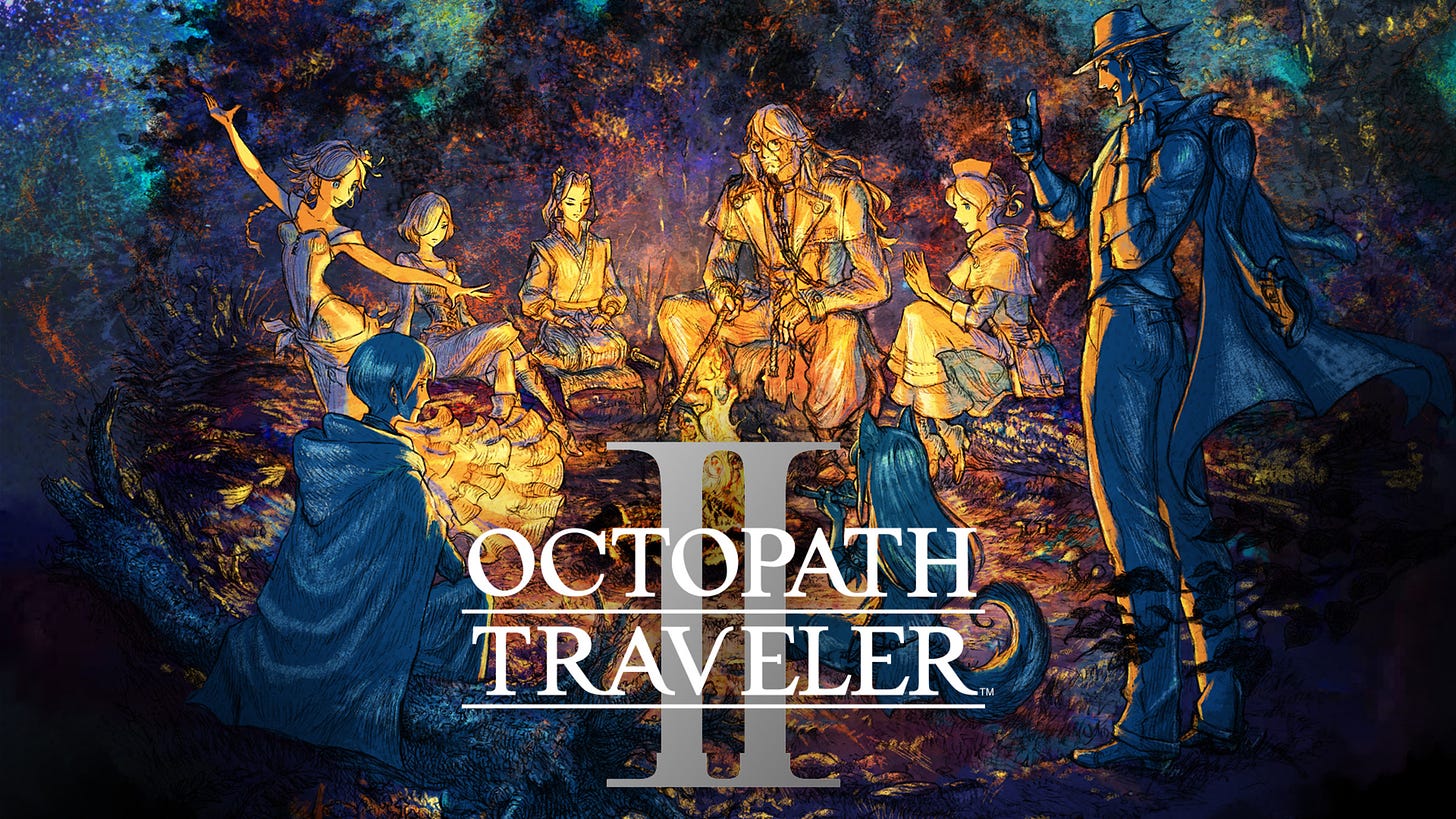- BOOTLEGDARKLORD BOYBLOGGING
- Posts
- Eight New Journeys: Prologue
Eight New Journeys: Prologue
Introduction to my Octopath Traveler 2 Analysis
If you follow me on tumblr, you are likely aware that Octopath Traveler 2 has pretty much taken over my life. It’s such a good game guys. It’s also really long, it has eight entire stories and an epilogue at the end that ties them all together! It took me about 85 hours to get through all of it, and there’s still a bunch of side quests I have to do (one of which will take me a really long time. If you know you know). And because that’s a lot of game, it has left me with a lot to think about. My English major brain has been turning this game in its gears and I’m finding it hard to think about anything else.

So my fun solution to this problem is to write a series of essays on each of the eight stories and the themes within them, as well as any baggage they carry that complicates them. Because some of them are written with very specific historical contexts in mind, and that leaves a lot of room to wonder what kinds of commentary the game is making about these specific historical moments. While Octopath Traveler 2 isn’t anachronistic, it certainly feels that way sometimes with how different the settings are. I mean, the area that is basically just Edo era Japan is directly south of the area that is western-expansionist America, that’s wild, but those two time periods are parallel to each other, even though in real life they happened on opposite ends of the world (Edo era Japan ends in 1867 and the Louisiana purchase happened in 1803, though Partitio’s chapter is undoubtedly set closer to the end of the Edo period as it concerns the beginnings of the locomotive and railroad industries and the industrial revolution).
I bring this up because due to the nature of Solistia’s setting, there will inevitably be overlap between the stories. This will likely come into conflict with the fact that I’m writing these one at a time, so as I write them I may go back and make minor edits to previous essays. However, the character stories themselves are mostly self-contained, so I hopefully won’t have to do this too much. I also will limit myself on this to avoid redundancy, but I don’t think it’s possible to avoid a bit of repetition occasionally with how large this game is, especially because some locations get visited fairly frequently and there is quite a bit of thematic overlapping, especially with the endings of the chapters and the “crossed paths” stories.
Speaking of the latter, I will go over these in the epilogue essay, though briefly as they mostly serve as vignettes for character development and setting up foreshadowing for the game’s final ending. I also won’t be discussing side quests at all, because that would make this project really bloated. There is going to be a lot of variety in each essay, tonally and content-wise, as that is true of the game as well. Also, I will most likely be posting other things between these articles to avoid getting burnt out on them, though my general goal is to finish this project during my summer break, which ends in late August.
Finally, my goal with this project is to look at the stories of this game from different angles than were likely intended, so here I want to go over how authorial intent and death of the author tend to work in analysis, or at least how I tend to do them. When it comes to authorial intent, I tend to view that as less an ultimate answer to how to interpret something and more as a starting point. Knowing what an author/authors were trying to do contextualizes the purpose and context of a story. Meanwhile, death of the author generally means accepting readings of the story that were not intended by the author, as once a piece of art is released into the wild it belongs to the audience. It doesn’t mean ignoring the author’s presence neccesarily but it does mean being willing to go against their word on the meaning of a text if doing so makes sense. As far as I know the writers of Octopath Traveler 2 haven’t been going around stating their exact intentions with the narratives of the game, but when it comes to the parts of the text that are more obvious it’s possible to piece together what they were going for, so that’s what I mean when I say I’m using death of the author here.
With that all out of the way, I’m looking forward to being able to go on a new kind of journey with this game :)